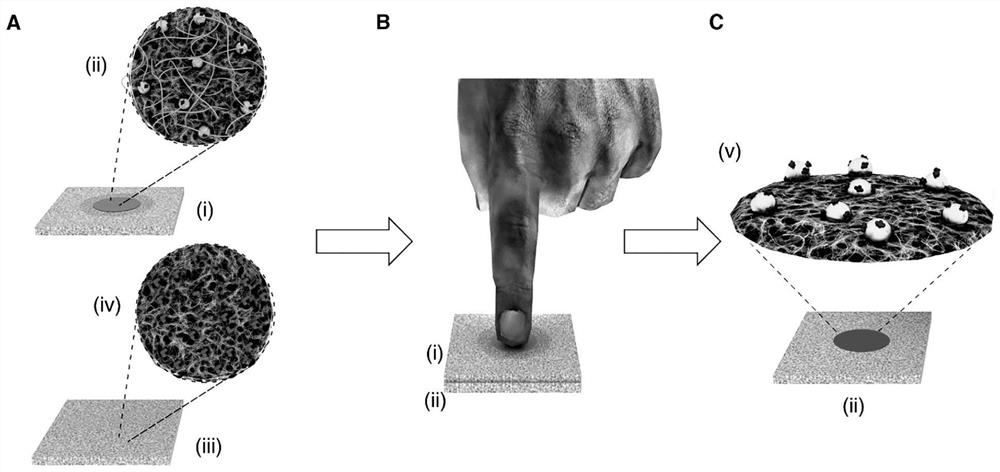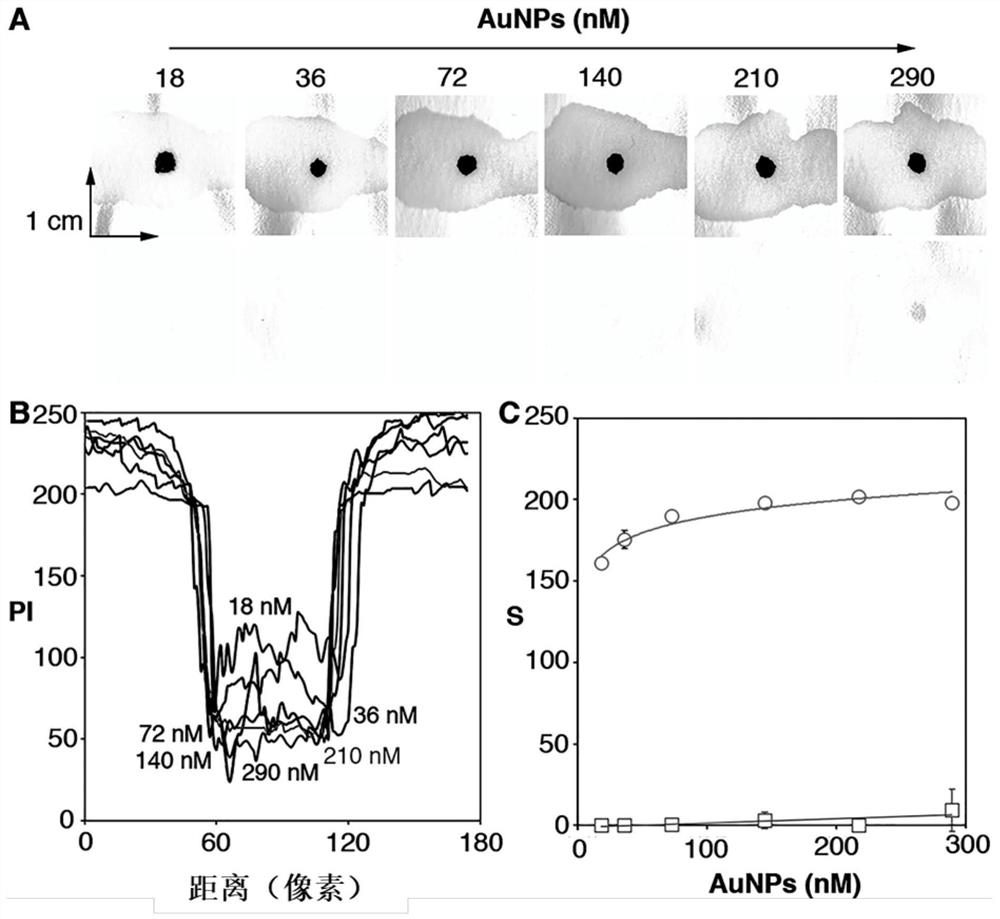Method for storing and releasing protein-modified nanoparticles on paper substrate
A protein modification and nanoparticle technology, applied in nanotechnology, chemical instruments and methods, nanotechnology, etc. for materials and surface science, can solve problems such as low efficiency and insufficient characterization of nanoparticle release, and achieve easy manufacturing Effect
- Summary
- Abstract
- Description
- Claims
- Application Information
AI Technical Summary
Problems solved by technology
Method used
Image
Examples
Embodiment Construction
[0055] Synthesis and modification of gold nanoparticles with polyethylene glycol and avidin: Citrate-terminated gold nanoparticles with a diameter of approximately 40 nm were synthesized using the Turkevich method as previously described (Russell et al., Augmented Reality for Real-Time Detection and Interpretation of Colorimetric Signals Generated by Paper-Based Biosensors. ACS Sensors 2017, 2, 848–853). The nanoparticles were then modified overnight with 0.1 mM thiolated polyethylene glycol (PEG) molecules terminated with carboxylate moieties (poly(ethylene glycol) 2-mercaptoethyl ether acetic acid, Mn2100, Sigma). The resulting PEGylated nanoparticles were concentrated and washed 5 times with water by centrifugation at 8000 rpm for 6 minutes. Finally, the nanoparticles were suspended in 0.5M 2-(N-morpholino)ethanesulfonic acid (MES, Sigma) with pH adjusted to 5.5. Then by adding 1 mg of N-(3-dimethylaminopropyl)-N'-ethylcarbodiimide hydrochloride (EDC, Sigma) and 2 mg of N-...
PUM
| Property | Measurement | Unit |
|---|---|---|
| diameter | aaaaa | aaaaa |
Abstract
Description
Claims
Application Information
 Login to View More
Login to View More - R&D
- Intellectual Property
- Life Sciences
- Materials
- Tech Scout
- Unparalleled Data Quality
- Higher Quality Content
- 60% Fewer Hallucinations
Browse by: Latest US Patents, China's latest patents, Technical Efficacy Thesaurus, Application Domain, Technology Topic, Popular Technical Reports.
© 2025 PatSnap. All rights reserved.Legal|Privacy policy|Modern Slavery Act Transparency Statement|Sitemap|About US| Contact US: help@patsnap.com



